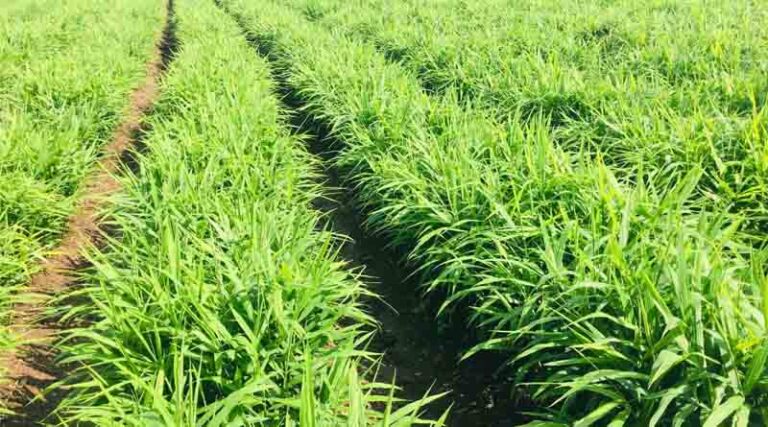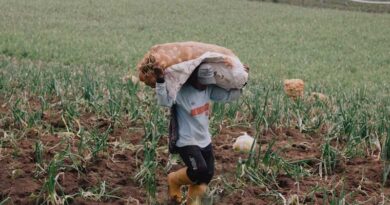
New Pyricularia Disease Threatens Ginger Cultivation in Karnataka: ICAR-IISR Issues Advisory
Emergence of a New Fungal Threat in Ginger in India
27 June 2025, New Delhi: In a significant plant health development, researchers at the ICAR–Indian Institute of Spices Research (ICAR-IISR), Kozhikode, have identified a new fungal disease affecting ginger crops in parts of Kodagu district, Karnataka. The disease is caused by Pyricularia spp., a pathogen previously known for inflicting blast diseases on monocot crops like rice, wheat, and barley. This is the first time that Pyricularia has been recorded on ginger, signaling a new threat to commercial spice cultivation in the region. The disease was particularly severe during the 2024 season, with rapid field-level outbreaks and considerable yield reduction.
Disease Symptoms and Crop Damage
The infection initially appears as yellowing of ginger leaves, accompanied by small dark olive-green to black spots during the early stages. As the disease progresses, it spreads with alarming speed across the field—often in a matter of hours. This leads to premature leaf drying and widespread plant collapse. Although the rhizomes of infected plants are not visibly damaged, the early defoliation interferes with proper rhizome development and weight gain. Farmers in the affected region of Kodagu have reported up to 30 percent loss in rhizome yield due to the disease, making it a critical issue for ginger producers and agricultural extension agencies.
Role of Climatic Conditions in Disease Spread
The widespread occurrence of this new disease in Kodagu has been linked to specific microclimatic conditions during the months of August and September 2024. The region experienced intense dew fall in the mornings, creating a highly conducive environment for the fungal spores of Pyricularia to germinate and spread.
Unlike other ginger-growing belts in Karnataka and Kerala, which remained unaffected, Kodagu’s unique weather conditions during the late monsoon phase appear to have triggered the outbreak. Research teams from ICAR-IISR and its regional station at Appangala confirmed that the dew-induced humidity played a key role in disease proliferation. However, timely collection and preservation of infected samples proved to be challenging, as most samples dried during transport to Kozhikode. Despite these obstacles, scientists conclusively identified Pyricularia spp. as the causal agent.
Recommended Control Measures and Fungicide Application
To contain the disease and prevent future outbreaks, ICAR-IISR has advised a set of fungicidal treatments and field practices. For seed rhizomes, researchers recommend soaking the planting material for 30 minutes in fungicidal solutions, either Propiconazole at a concentration of 1 ml per litre or a combination of Carbendazim and Mancozeb at 2 grams per litre. After treatment, rhizomes should be stored in a well-ventilated area to avoid further fungal contamination.
As a preventive measure, foliar sprays of Propiconazole (Tilt) or Tebuconazole (Folicur) at 1 ml per litre are advised approximately four months after planting. These sprays help in suppressing early disease establishment. If symptoms such as dark pinhead spots surrounded by yellowing tissue appear, immediate fungicidal treatment is essential, given the high speed at which the pathogen can spread. Field observations confirm that entire plots can become infected within a few hours, and new infections have been reported in fields up to 20 kilometers apart.
Interim Measures and Research Continuation
In areas already affected by the disease, ICAR-IISR recommends that farmers temporarily avoid ginger cultivation until further disease behavior is studied. The research team continues to investigate the biology of Pyricularia in ginger and aims to understand the environmental triggers that support its lifecycle in this new host.
Long-term efforts are underway to assess the possibility of resistant ginger varieties and explore biological alternatives to synthetic fungicides. The emergence of this fungal pathogen in a non-traditional host like ginger poses new questions for plant pathologists and offers opportunities for innovation in crop protection strategies.
Also Read: Five Indians Recognized in 2025 Top Agri-Food Pioneers List by World Food Prize Foundation
📢 If You’re in Agriculture, Make Sure the Right People Hear Your Story.
Have a story the global agriculture industry should hear? From product launches to strategic announcements, Global Agriculture offers unmatched visibility across international agri-business markets. Connect with us at pr@global-agriculture.com to explore editorial and advertising opportunities that reach the right audience, worldwide.






